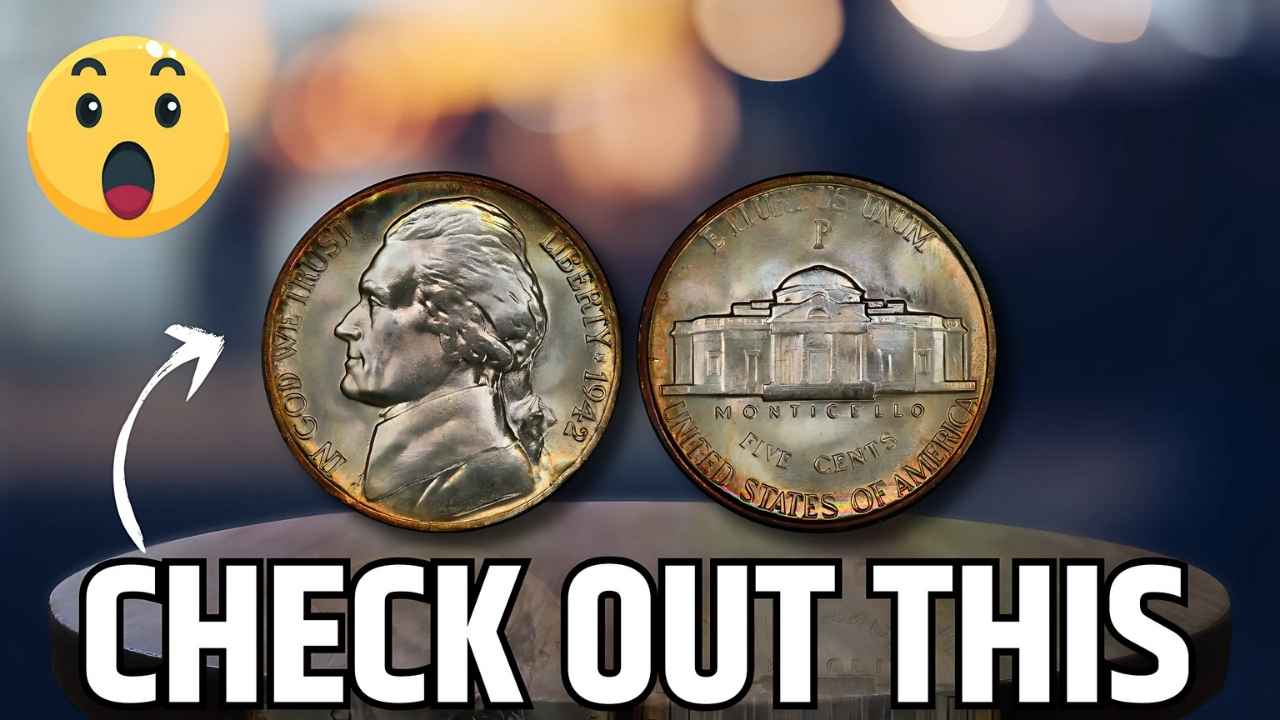Wartime Jefferson Nickel: During World War II, the United States made several changes to everyday materials to support the war effort. One surprising item that was affected by this shift was the humble five-cent coin, better known as the Jefferson nickel. What makes this story even more fascinating is that one particular version of this coin — minted in 1942 — is now valued at a staggering $185,000 due to its rarity and historical context.
Let’s dive into how this small coin became a major collector’s item.
Why the Composition Changed in 1942
In 1942, the United States Mint changed the composition of the nickel. The reason? Nickel was a critical material needed for wartime production. To conserve resources, the Mint began producing nickels made of 35% silver, 56% copper, and 9% manganese — a significant departure from the traditional 75% copper and 25% nickel mixture.
This new “war nickel” still looked similar to its predecessor, but it had a distinct marker: a large mint mark placed above Monticello on the reverse side — something that had never been done before on a U.S. coin.
What Makes This Particular Nickel Special?
Most Jefferson nickels minted during the war years (1942–1945) are relatively common and can still be found in pocket change or coin collections. However, there are a few extremely rare varieties, including one specific 1942-P nickel struck on the wrong planchet (coin blank).
Rather than being struck on a typical wartime silver alloy planchet, this rare coin was mistakenly minted on a blank used for pennies, making it a striking error. This anomaly is what launched this coin’s value into the six-figure territory.
How Was It Discovered?
Over the years, collectors and coin experts have come across a handful of these rare errors. The most notable specimen, graded by the Professional Coin Grading Service (PCGS), was certified as a genuine 1942-P wartime nickel struck on a copper planchet — a mistake that should never have occurred.
Because the coin should have been silver, the reddish tone and lighter weight stood out to experts. It was authenticated through weight testing, visual inspection, and metallurgical analysis.
Why It’s Worth $185,000 Today
What makes this Jefferson nickel so valuable is its unusual error, historical timing, and pristine condition. Coins like this don’t come around often — in fact, only one or two are known to exist in collectible-grade condition.
Auction houses and rare coin dealers have placed valuations as high as $185,000, especially when the coin is certified by PCGS or NGC (Numismatic Guaranty Company). For reference, typical war nickels are worth only a few dollars — which makes this rare version thousands of times more valuable.
How to Know If You Have One
If you’re curious whether you might own such a rare nickel, here are some quick tips:
- Check the year: Only 1942 nickels minted in Philadelphia (marked with a “P”) are known to have this specific error.
- Look at the metal: Regular war nickels are silver-colored. If your 1942-P nickel has a copper tone (similar to a penny), that’s a big clue.
- Weigh it: A standard silver war nickel weighs 5 grams. A copper planchet version will weigh around 3.11 grams (same as a penny).
- Get it checked: If you’re unsure, consult a coin expert or send it to a professional grading service for verification.
What was once just a five-cent piece meant for everyday use has become a rare historical artifact worth $185,000. These kinds of discoveries remind us that even the smallest items in our pockets can hold incredible stories — and potentially life-changing value.
So next time you come across some old change, take a second look. You never know what piece of history might be hiding in plain sight.




